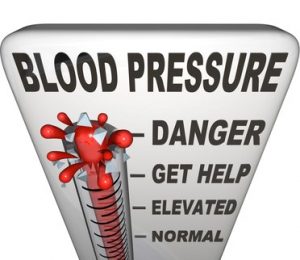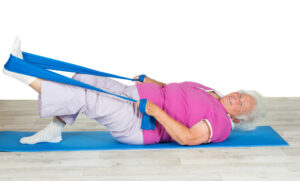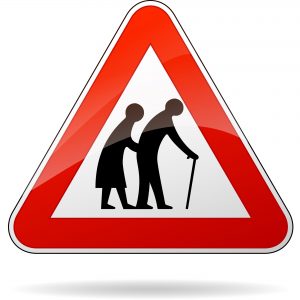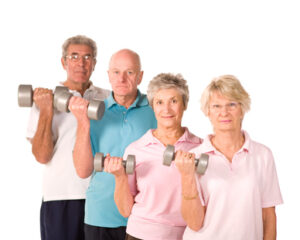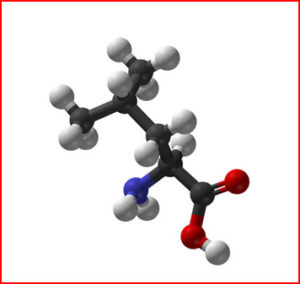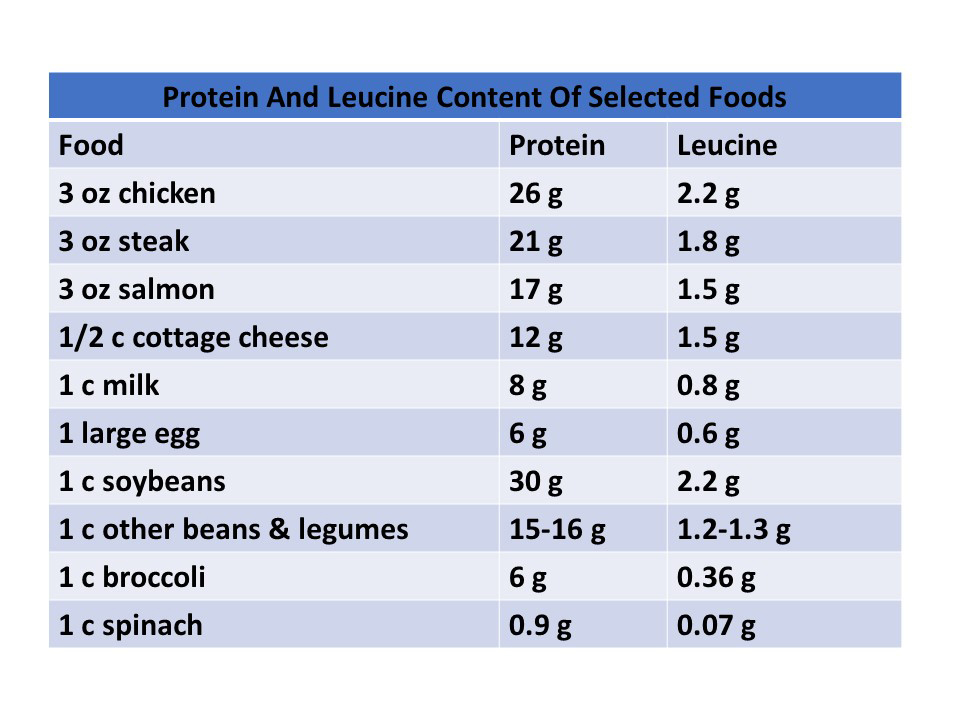What Does This Study Mean For You?
Author: Dr. Stephen Chaney
 It’s a new year and once again you have set New Year’s goals. If you are like millions of Americans your top 3 goals are probably to eat healthier, exercise more, and lose weight – not necessarily in that order. Now comes the hard part:
It’s a new year and once again you have set New Year’s goals. If you are like millions of Americans your top 3 goals are probably to eat healthier, exercise more, and lose weight – not necessarily in that order. Now comes the hard part:
- Setting realistic weight loss goals and developing strategies for achieving those goals.
- Deciding on food choices and eating behaviors you will change.
- Deciding on what kind of exercises you will do and how often you will do them.
With respect to exercise, the consensus is clear. We should be aiming for ≥150 minutes of moderate-to-vigorous physical activity per week. But how often should we be exercising? Here the answer is a bit murkier.
Most experts recommend we exercise 3-5 times a week. But that advice doesn’t work for everyone. For some people, their work schedule and family responsibilities make it difficult to find time during the week to exercise.
However, many of these individuals are very active during the weekend with things like yard work, organized sports, long hikes, and/or cycling excursions. We refer to these people as Weekend Warriors.
If you are one of these individuals, you are probably wondering if that’s enough. Are weekend warriors as healthy as people who exercise every day, or must you squeeze some exercise into your busy week?
Some recent studies have suggested that frequency of exercise is not important as long as you exceed the magical 150 minutes per week. However, each of these studies had limitations. For example:
- They only looked at a few kinds of exercise and a few diseases.
- Some studies depended on self-assessments of exercise frequency and intensity, which are notoriously unreliable.
The study (Circulation, 150: 1236-1247, 2024) I am reviewing today compares the health outcomes of weekend warriors and people who exercise throughout the week and was designed to eliminate the limitations of previous studies.
How Was This Study Done?
 The authors used data obtained from the UK Biobank Study, which is an ongoing study following the health outcomes of individuals from all corners of the United Kingdom who enrolled in the study between 2006 and 2010. Each participant underwent a health assessment when they enrolled.
The authors used data obtained from the UK Biobank Study, which is an ongoing study following the health outcomes of individuals from all corners of the United Kingdom who enrolled in the study between 2006 and 2010. Each participant underwent a health assessment when they enrolled.
This study used data from a subset of 89,573 participants (average age 62, percent women 56%) who wore a wrist accelerometer to measure activity levels for one week between June 8, 2013, and December 30, 2015. The accelerometer measured activity levels every 5 seconds, so it was able to record the intensity, frequency, and duration of exercise during the week.
Participants were divided into three groups based on their accelerometer measurements:
- Inactive: <150 minutes per week of moderate-to vigorous physical activity (34% 0f participants).
- Weekend Warriors: ≥150 minutes per week of moderate-to vigorous physical activity with the bulk of the activity spread over 1-2 days (42% of participants).
- Regular Exercisers: ≥150 minutes per week of moderate-to vigorous physical activity with the activity spread over multiple days (24% of participants).
The participants were followed for an average of 6.3 years with 94% of participants having >5 years of follow up. The outcome was frequency of incident diseases (diseases that were not present during the accelerometer measurements but were diagnosed during the follow-up period).
Because the United Kingdom is one of the countries with a “Big Brother knows all” health care system, the investigators were able to correlate the exercise levels of each participant with 678 diseases and health conditions. The study compared the disease incidence of weekend warriors with the inactive group, regular exercisers with the inactive group and weekend warriors with the regular exercisers.
Are Weekend Warriors As Healthy As Regular Exercisers?
 Let me start with the big picture and then I will give some specific statistics.
Let me start with the big picture and then I will give some specific statistics.
- Both the weekend warrior and regular exercise patterns were associated with lower risk for >200 diseases compared to the inactive group.
-
- For both exercise patterns there were a small number of associations with higher disease risks – primarily musculoskeletal disorders and dermatological conditions (think sports injuries and excessive sun exposure).
-
- However, both exercise patterns were associated with a lower risk of over a dozen musculoskeletal conditions such as osteoarthritis and spinal degenerative spinal conditions.
- While both exercise patterns were associated with the risk of >200 diseases, the risk reduction was greatest for cardiometabolic diseases associated with obesity. For example, the risk reduction for:
-
- Hypertension was reduced by 23% and 28%, respectively, for weekend warriors and regular exercisers.
-
- Diabetes was reduced by 43% and 46%, respectively, for weekend warriors and regular exercisers.
-
- Obesity was reduced by 45% and 56%, respectively, for weekend warriors and regular exercisers.
-
- Sleep apnea (which is associated with obesity) was reduced by 43% and 51%, respectively, for weekend warriors and regular exercisers.
-
- Chronic renal failure (Chronic renal failure can be caused by a fatty liver, which is associated with obesity) was reduced by 36% and 35%, respectively, for weekend warriors and regular exercisers.
-
- Gallstones (which are associated with obesity) were reduced by 36% and 43%, respectively, for weekend warriors and regular exercisers.
- You will notice that risk reduction was generally greater for regular exercisers than for weekend warriors. That is because the regular exercisers averaged higher weekly totals for moderate-to-vigorous activity levels than weekend warriors. When the two groups were compared at the same weekly activity level, there was no significant difference between the two groups.
What Did The Authors Say About This Study?
 The authors discussed the limitations of the study in detail in the discussion section of their paper. The three biggest limitations are:
The authors discussed the limitations of the study in detail in the discussion section of their paper. The three biggest limitations are:
- This study measured associations. It does not prove cause and effect.
- The study only measured exercise patterns and intensities for one week. Some participants may have changed their exercise patterns during the follow-up period.
- The wrist accelerometer used in this study has been validated for a variety of aerobic activities. It may be less accurate at measuring some strength training exercises. And it will be unable to measure isometric exercises, which have been shown to have some cardiometabolic health benefits.
However, this is a very large, well-designed study which is consistent with several earlier studies.
The authors also expanded on the significance of their findings with these comments:
1) “Efforts to optimize physical activity may be expected to have wide-ranging health benefits that extend beyond previously published associations with cardiovascular disease…We observed strong associations between physical activity and lower risk of up to 264 diseases.”
2) “Our results suggest that the achievement of guideline-adherent physical activity volumes [≥150 minutes per week of moderate-to-vigorous activity] is the key factor relevant to incident disease risk, as opposed to the pattern by which physical activity may be accrued…We did not identify a single condition for which risk appeared substantially different for one pattern versus the other.”
3) “Although we noted beneficial associations across a wide variety of diseases, our findings suggest that physical activity may be particularly effective for modifying risk of cardiometabolic conditions, including hypertension, obesity, diabetes, and sleep apnea.”
The authors concluded, “Achievement of measured physical activity volumes consistent with guideline recommendations [≥150 minutes per week of moderate-to-vigorous activity] is associated with lower risk of >200 diseases, with prominent effects on cardiometabolic conditions. Associations appear to be similar whether the physical activity follows a weekend warrior pattern or is spread more evenly throughout the week.”
What Does This Study Mean For You?
 This study has three major take-home messages:
This study has three major take-home messages:
1) If you weren’t already motivated to increase your exercise levels in 2025, this study is a wake-up call. You already know that exercise improves your mood, makes weight control easier, and reduces the risk of major diseases like diabetes, hypertension, and heart disease.
This study just added another 200 reasons to increase your exercise levels. (If you want to know the 200+ diseases that are positively impacted by exercise, read the study.
2) If you are someone whose schedule makes it difficult to find time during the week, this study is good news. This study suggests that weekend warriors can be as fit and healthy as people who exercise daily. However, there are a couple of important caveats:
-
- This study used a wrist accelerometer, so it was able to select only those weekend warriors whose total activity exceeded 150 minutes of moderate-to-vigorous activity. Unfortunately, many weekend warriors overestimate how much exercise they get during the weekend. For example:
-
-
- Mowing the lawn is exercise, but the amount of exercise you get is vastly different if you use a riding mower instead of a push mower.
-
-
-
- Weekend sports are a fun way to exercise, but the amount of exercise you get from an hour of soccer is probably different from an hour of softball.
-
-
- I could go on, but you get the idea. If you choose the weekend warrior route, be realistic about the amount of exercise you are getting.
3) This study found that people who exercised often during the week were likely to accumulate higher weekly totals of activity than weekend warriors. Simply put, it is easier to accumulate higher exercise totals when you exercise more frequently.
So, even if your schedule is busy, it’s worthwhile to try and find some time to exercise during the week rather than limiting all your exercise to the weekend.
The Bottom Line
A recent study asked whether weekend warriors got the same benefits from exercise as people who exercised on multiple days during the week (regular exercisers). The key findings from the study were:
- Weekly exercise levels of ≥150 minutes of moderate-to-vigorous activity were associated with reduced risk of over 200 diseases.
- The reduction in risk was greatest for obesity and cardiometabolic diseases like diabetes and hypertension.
- Once the ≥150 minutes of moderate-to-vigorous activity was reached, there was no significant difference in risk reduction between the weekend warrior and regular exercise patterns of activity.
For more details on this study and what this means for you read the article above.
These statements have not been evaluated by the Food and Drug Administration. This information is not intended to diagnose, treat, cure or prevent any disease.
______________________________________________________________________________
My posts and “Health Tips From the Professor” articles carefully avoid claims about any brand of supplement or manufacturer of supplements. However, I am often asked by representatives of supplement companies if they can share them with their customers.
My answer is, “Yes, as long as you share only the article without any additions or alterations. In particular, you should avoid adding any mention of your company or your company’s products. If you were to do that, you could be making what the FTC and FDA consider a “misleading health claim” that could result in legal action against you and the company you represent.
For more detail about FTC regulations for health claims, see this link.
https://www.ftc.gov/business-guidance/resources/health-products-compliance-guidance
___________________________________________________________________________
About The Author
Dr. Chaney has a BS in Chemistry from Duke University and a PhD in Biochemistry from UCLA. He is Professor Emeritus from the University of North Carolina where he taught biochemistry and nutrition to medical and dental students for 40 years.
Dr. Chaney won numerous teaching awards at UNC, including the Academy of Educators “Excellence in Teaching Lifetime Achievement Award”.
Dr Chaney also ran an active cancer research program at UNC and published over 100 scientific articles and reviews in peer-reviewed scientific journals. In addition, he authored two chapters on nutrition in one of the leading biochemistry text books for medical students.
Since retiring from the University of North Carolina, he has been writing a weekly health blog called “Health Tips From the Professor”. He has also written two best-selling books, “Slaying the Food Myths” and “Slaying the Supplement Myths”. And most recently he has created an online lifestyle change course, “Create Your Personal Health Zone”. For more information visit https://chaneyhealth.com.
For the past 45 years Dr. Chaney and his wife Suzanne have been helping people improve their health holistically through a combination of good diet, exercise, weight control and appropriate supplementation.

